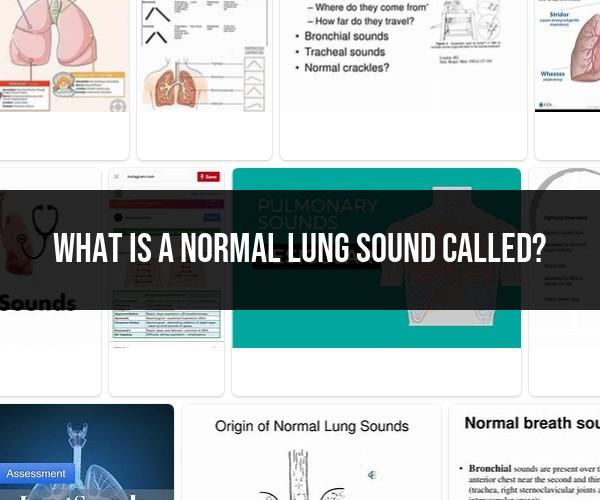What is a normal lung sound called?
Healthy lungs produce characteristic sounds that indicate proper functioning. Understanding normal lung sounds can help you assess respiratory health and detect potential issues early:
1. Vesicular Breath Sounds
Vesicular breath sounds are the gentle, rustling sounds heard during normal breathing. They are heard over most of the lung fields and are indicative of healthy, unrestricted airflow in the smaller airways and alveoli.
2. Bronchial Breath Sounds
Bronchial breath sounds are louder and more high-pitched sounds heard over the trachea and major bronchi. They are normal in these larger airways but should not be heard over peripheral lung fields. Hearing bronchial sounds in the periphery may indicate lung consolidation or pathology.
3. Tracheal Breath Sounds
Tracheal breath sounds are the loudest and highest-pitched sounds heard directly over the trachea. These sounds are normal over the trachea but should not be heard in other areas of the chest.
4. Crackles (Rales)
Crackles are intermittent, high-pitched sounds that resemble the noise produced when rubbing strands of hair together. They may be fine or coarse and can indicate various conditions, including fluid accumulation or opening of closed airways.
5. Wheezes
Wheezes are high-pitched, musical sounds often heard during exhalation. They are caused by the narrowing of airways, such as in asthma or bronchitis. Wheezes may indicate airway inflammation or obstruction.
6. Rhonchi
Rhonchi are low-pitched, rumbling sounds that resemble snoring. They are caused by the vibration of thick secretions in larger airways. Rhonchi may be indicative of conditions such as chronic bronchitis.
7. Stridor
Stridor is a high-pitched, crowing sound heard during inspiration. It usually indicates a partial blockage of the upper airway, often due to inflammation or an anatomical abnormality.
Conclusion
Understanding normal lung sounds and their characteristics is essential for assessing respiratory health. Any deviation from these sounds may indicate underlying issues that require further evaluation by a healthcare professional. Regular check-ups and prompt attention to abnormal lung sounds can help maintain optimal respiratory well-being.












